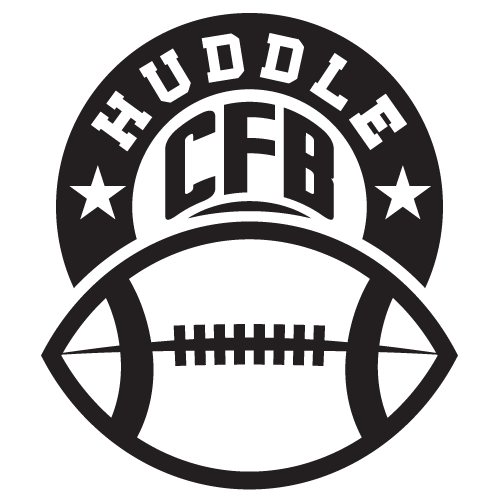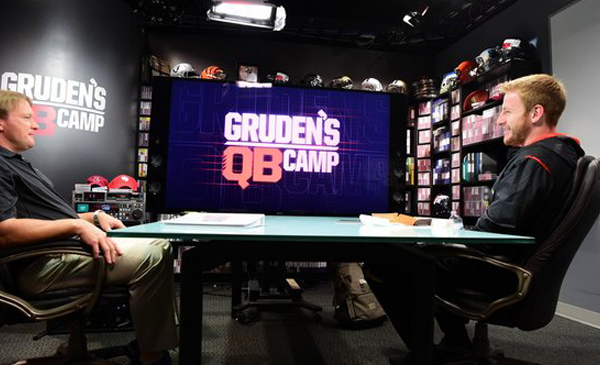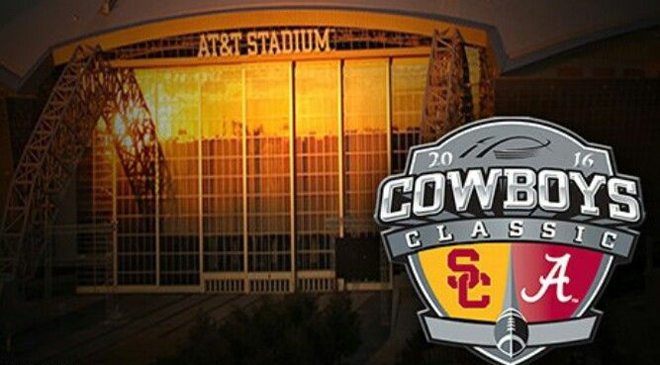Alabama football means different things to different audiences: rivals. SEC champion. National champion. Perennial power. College football’s standard bearer.
To those within the USC football program, Alabama means something else for the next 4.5 months.
“It is a special game. We all know that. We look forward to the opportunity,” head coach Clay Helton said following USC’s spring game Saturday in Los Angeles.
It’s a special game, yes. And as Helton noted, “It is the next game.”
Next game has taken special meaning at USC since Helton became interim head coach in mid-October, and full-time leader in November.
“We started something last fall: ‘playoff football.’ Take the next game and treat it like it’s a championship game.”
September’s Cowboys Classic at AT&T Stadium in Arlington, Texas, does have a championship vibe in that Alabama and USC represent two of the most storied programs in college football history. It also marks the first meeting between the Trojans and former head coach Lane Kiffin, now the Crimson Tide’s offensive coordinator.
Plenty makes this particular next game more intriguing than the usual next game.
“Everyone’s going to talk about Alabama,” wide receiver JuJu Smith-Schuster said. “But right now, it’s about working towards [playing Alabama].”
Despite 27 combined, claimed national championships, USC and Alabama have existed in a Bizarro World throughout much of recent college football history. The Trojans’ rise to dominance in the 2000s coincided with Alabama rebuilding after crippling NCAA sanctions.
If that seems familiar, it’s because the roles were reversed at the start of the current decade.
Despite beating rival UCLA for the first time since 2011, and playing in the program’s first-ever Pac-12 Championship Game, USC’s “playoff football” mindset faltered in season-ending losses to Stanford and Wisconsin — the latter of which, coincidentally, opened the season losing to Alabama.
Weapons abound on the 2016 Trojans roster, but questions linger. Chief among them is an ongoing quarterback competition, which I cover in more detail for Sports On Earth.
The unknown shrouds USC in the months leading up to a Sept. 3 Texas showdown.
Conversely, the Crimson Tide begin the 2016 season carrying the sport’s title belt. Despite its own quarterback battle, initial outlook suggests little drop-off from the championship level Nick Saban made standard. Alabama’s able to continuously rebuild comes from the pillar that is Saban.
USC has lacked said foundation since Pete Carroll’s exit after the 2009 season — a watershed season in the trajectory of both programs.
Saban’s first SEC (and national) championship at Alabama came that year, coinciding with the first year in an ongoing, seven-season conference title drought at USC.
The Trojans have had as many head coaches since the conclusion of the 2009 campaign — four — as Alabama’s won national titles.
As Saban’s run demonstrates, the foundation for stability comes from the top. Clay Helton’s first full season as head coach, and his future thereafter, rests on his ability to provide that long-absent foundation.
ESPN.com’s Ted Miller examined Helton’s methods for setting that foundation in a feature story well worth your time. Helton isn’t necessarily influenced by Alabama per se, but he does take his philosophy from the region in which the Saban Dynasty grew.
Helton’s measured, even-keel approach stands in sharp contrast to the tumult defining USC football in recent years, even dating back to the end of Carroll’s tenure. He’s emphasized eliminating ego and building mental toughness.
The starting point is practice.
“Our practices are hard. We’re at a high level, back-to-back-to-back,” offensive tackle Zach Banner said, adding “an 80-play game is nothing” in comparison.
That’s important, because second halves vexed 2015 USC. In five of their six losses, the Trojans squandered second-half leads.
Meanwhile, Alabama’s proven especially adept at putting the squeeze on opponents just before and after halftime. The Crimson Tide’s M.O., particularly against better competition, is to unleash a flurry after physically exhausting teams early.
Alabama occupies one date on USC’s 2016 calendar, but the Tide have a way of lasting with an opponent beyond a single game. Bill Connelly looked at the so-called “Bama Effect” last season, a theory backed up by some statistical evidence suggesting the body-blow sustained playing Saban’s squad carries over.
Look at Alabama’s recent Week 1 contests against Power Five opponents, and taking an opening Saturday Ls hasn’t exactly propelled those teams into terrific seasons. Wisconsin’s 10-win 2015 stands as the notable exception.
West Virginia (2014) went on to finish 7-6; Virginia Tech went 8-5 the season prior. Ditto Michigan in 2012, which suffered perhaps the most famous Week 1 beatdown from a Saban-coached team, in the same stadium where the Crimson Tide and Trojans meet in September.
Perhaps these teams met their ceiling even without a Bama Effect, but the ensuing results do nothing to curtail the Tide mythos. Having the wherewithal to endure to a physically and emotionally contest Week 1, and refocus on Next Games No. 2-12, win or lose, would separate this USC squad from more recent editions.
In that sense, Alabama represents where USC is as a program.




[…] What Alabama Represents For USC […]